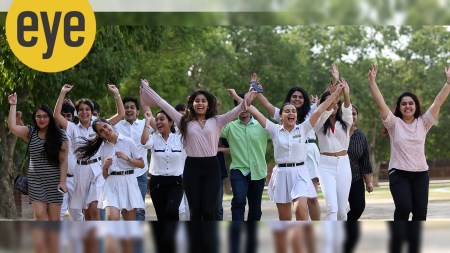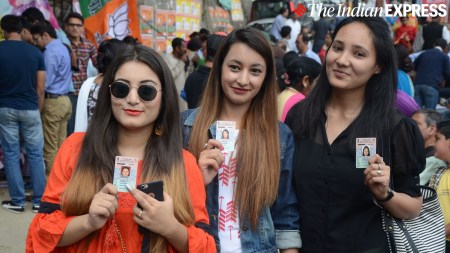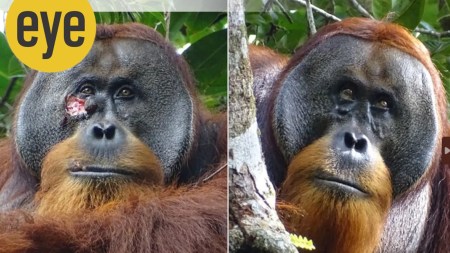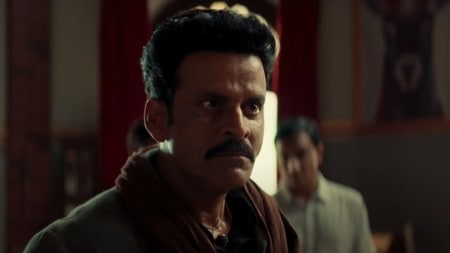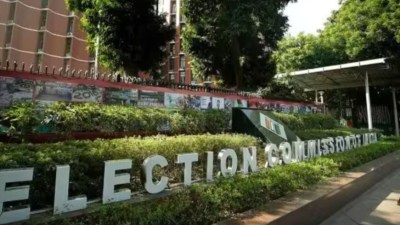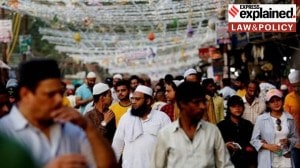- India
- International
Inside a small Taiwan city, a blueprint for India’s chip dreams
Taiwan produces over 90 per cent of the world’s most advanced semiconductor chips.
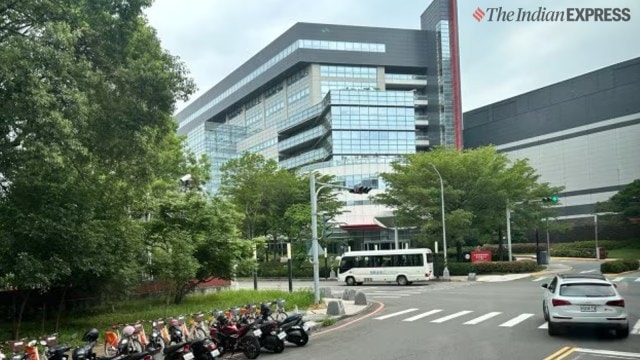 TSMC, the world’s most valuable chip firm, has six fabs within Hsinchu and a research centre. (Express photo by Soumyarendra Barik)
TSMC, the world’s most valuable chip firm, has six fabs within Hsinchu and a research centre. (Express photo by Soumyarendra Barik)
JUST ABOUT four decades ago, it was a town renowned for its tea farms and infamous for its snakes. Today, it is home to global chipmaking excellence. A key driver of Taiwan’s economic turnaround, about 80 kilometres from its capital, is the city of Hsinchu — and its famed Science Park.
Hsinchu’s story holds key lessons for India’s promised chip city of Dholera in Gujarat, a region roughly the size of Singapore on which New Delhi has pinned its hopes of creating its own Silicon Valley.
At first glance, the scenery belies the notion that Hsinchu is part of what is called Taiwan’s “silicon shield”, a strategic city at the heart of keeping the island safe from Chinese aggression. A row of two-wheelers are neatly lined up on the roads, there are round-the-clock convenience stores, multi-cuisine restaurants, parks, schools, universities, massive residential boroughs, and a lot of trees.
But beyond the tree cover, the signages on the big buildings dotting the city give a sense of what makes Hsinchu one of the most important places for global economy. Not all the names may be popular, but they are important. And despite not being Taiwan’s diplomatic or financial centre, Hsinchu is perhaps its most global city.
Taiwan produces over 90 per cent of the world’s most advanced semiconductor chips, and Hsinchu is home to the world’s most valuable chip firm, Taiwan Semiconductor Manufacturing Company (TSMC), which accounts for a substantial part of the total production. Mediatek, another Taiwanese firm which designs chips, is also based there. So are the likes of Wistron (which briefly made iPhones in India before selling its plant to the Tatas) and Taiwan’s first chip company United Microelectronics (UMC).

Companies registered in the Hsinchu Science Park account for about 6-8 per cent of Taiwan’s total gross domestic product and about 12 per cent of the trade-reliant island’s exports. A little over 150,000 people — close to 1 per cent of Taiwan’s population — work in Hsinchu, which has the island’s youngest average age of residents.
In the 1980s, when Taiwan was looking to turn around its fledgling economy after losing its seat at the United Nations a decade ago and a major fuel crisis a few years later, the special high-tech zone in Hsinchu was established by government officials to woo the world’s best technological talent to what was then a poor tropical island. At the time, many engineers with Taiwanese connections lived in places like the United States, Japan and Europe. But when the government called on them to return and make Taiwan a tech manufacturing hub, many of them took the plunge.
One of them was Morris Chang, who, after a long career in the US chip industry, moved to Taiwan in 1985. Two years later, when Chang was 55, he founded TSMC.
The company pioneered the contract manufacturing route to make chips, where it would not have to design any of the chips. This proved to be a revolutionary business model, paving the way for fabless companies including Apple and Nvidia, which are TSMC’s biggest customers today.
The Taiwanese government played a crucial role before TSMC was set up. Aside from the subsidies to set up factories, it set up the Industrial Technology Research Institute (ITRI) about a decade before, which secured a technology transfer for chipmaking from the Radio Corporation of America.
After perfecting the technology, it realised that the government should move out of chipmaking, and transferred the tech along with the tools to a private company, thus giving rise to the UMC, which was set up in 1980. TSMC was also incubated and spun off from the ITRI a few years later.
India, which has a big talent pool of chip design engineers, currently lacks an adequate workforce which can be employed on cutting-edge fabrication factory floors. The government hopes that its big non-resident engineering talent pool will return home when India goes into the chip sector business. But, India will then have to ensure a high quality of life too.
The impact of Hsinchu’s importance, for Taiwan’s economy and its people, has changed the geography of wealth in the island territory.
According to the latest data available, residents of Hsinchu city had the highest average annual household income in Taiwan for the fifth year running in 2021. Their average annual income was approximately $49,000, or close to Rs 41 lakh, in 2021. Most of the people living in Hsinchu and nearby areas such as Baoshan work at one of the several semiconductor facilities in the Science Park or allied industries that supply materials for chip production.
The town and its industrial operations are largely self-sufficient. Water needed for chipmaking comes from the Baoshan reservoir, about 20 kilometres from Hsinchu, and all major gas suppliers are housed in the vicinity of the city. It has two major universities — the National Yang Ming Chiao Tung University and the National Tsing Hua University — which are considered among the top schools for semiconductor education, ensuring that a steady stream of talented semiconductor engineers graduate every year.
Hsinchu can serve as a blueprint for India.
Dholera today faces many of the same problems that Hsinchu did four decades ago. Many engineers who had moved to Hsinchu when it was being set up were disappointed at the state of the infrastructure, and the overall wilderness that surrounded the area. Of course, the rise of Taiwan’s semiconductor industry, primarily led by TSMC, changed the fate of Hsinchu, Taiwan and its people.
Dholera, and India, would need a similar champion. While the government has ensured that core infrastructure is in place — a substantial network of roads and power stations — Dholera is mostly a barren piece of land with some factories coming up sporadically. There’s little sign of human activity for vast stretches, no residential societies, parks, schools or restaurants.
The Tata-PSMC foundry and the packaging plant being built by CG Power could bring big changes and potentially spur a chip industry that has long eluded India — although it will take some time before the projects come into their own.
An international airport is under construction near Dholera, for foreign visitors and future employees of factories that set up shop, as well as for moving materials and components needed to service the industries in the region. For instance, gases, crucial in the chipmaking process, will come from Dahej, about four hours away from Dholera.
Although Hsinchu is an ideal blueprint on which the government wants to build Dholera, there would be some differences. For instance, people working at plants in the city would live in Ahmedabad, more than a hundred kilometres away. As a result, Hsinchu-like schools, convenience stores, restaurants or nightlife, are unlikely to come up in Dholera.
(The reporter was in Taiwan at the invitation of the East-West Center, an educational institution founded by the US Congress.)
May 25: Latest News
- 01
- 02
- 03
- 04
- 05


